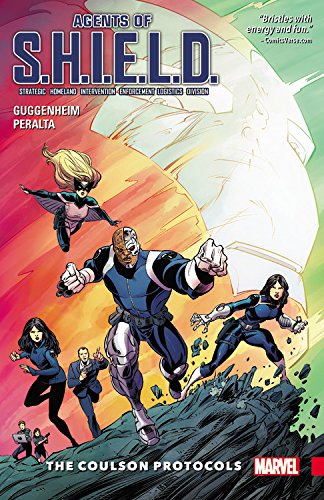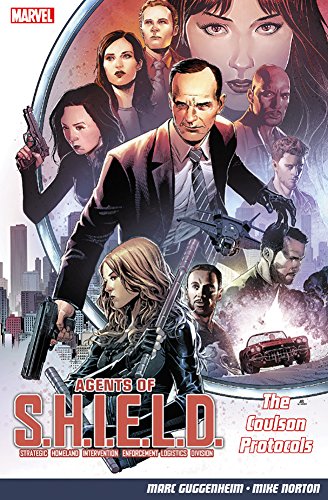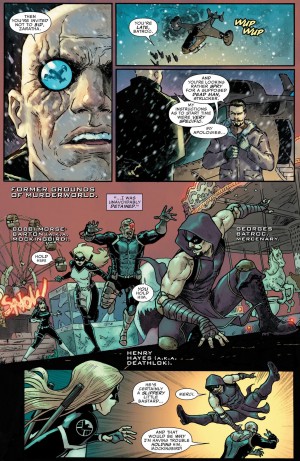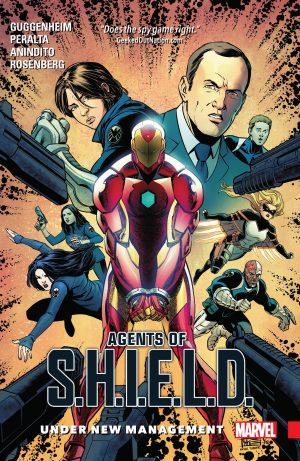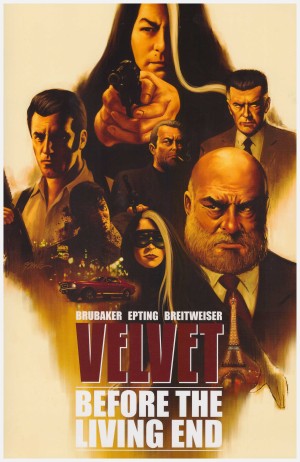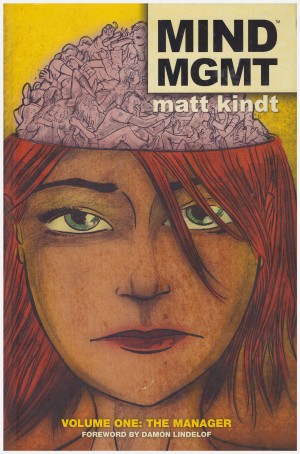Review by Frank Plowright
It may have been the first TV show spinning off from the Marvel movies, but S.H.I.E.L.D. has never been a successful comic series for the company, the idea of a spy and defence organisation not a headliner in a world of superheroes. Yet as in those movies, it’s underpinned and given credence to Marvel’s superhero community for decades.
The concentration here is on the TV cast. We have Mockingbird, Quake, Deathlok, Leo Fitz and Melinda May among others, with Agent Phil Coulson as the central character around whom everyone else pivots. Marc Guggenheim produces a TV style drama, high on mystery and suspense with an undercurrent of personality issues and the occasional moment of astonishment. It makes good use of the wider Marvel universe, explains a few minor elements glossed over on the TV show (why Coulson calls his car Lola), and has a polish convincing that this is the way a covert organisation works. The major issues begin with data retrieval, the secrets of the world’s superheroes compromised and a race against time to prevent those secrets seeping into wider circulation. From there Guggenheim introduces further threats as he escalates the suspense.
Unfortunately the art doesn’t meet the same high standards. Germán Peralta is decidedly average. He manages versions of the cast approximating their TV incarnations, but without ever entirely convincing, and there’s a stiff quality to his figures. Nor is he an artist keen on illustrating any more than he has to, which means the drama plays out against an awful lot of flat colour backgrounds, and the S.H.I.E.L.D. agents go about their business in a strangely underpopulated world. Parisians will never have seen the Champs d’Elysées so empty.
This is a shame not just because Guggenheim’s plots work, but because there’s also spectacle to them that’s never realised. He makes good use of super powered heroes and villains, and twists them around until there’s no certainty as to who can be trusted. One of the core team appears to have their own agenda for starters. He sows further confusion via image-inducer technology, meaning that the people we’re seeing may not necessarily be who they resemble.
Some subplots remain unanswered, after all if everything were neatly tied up what would there be to lead us into Under New Management.
